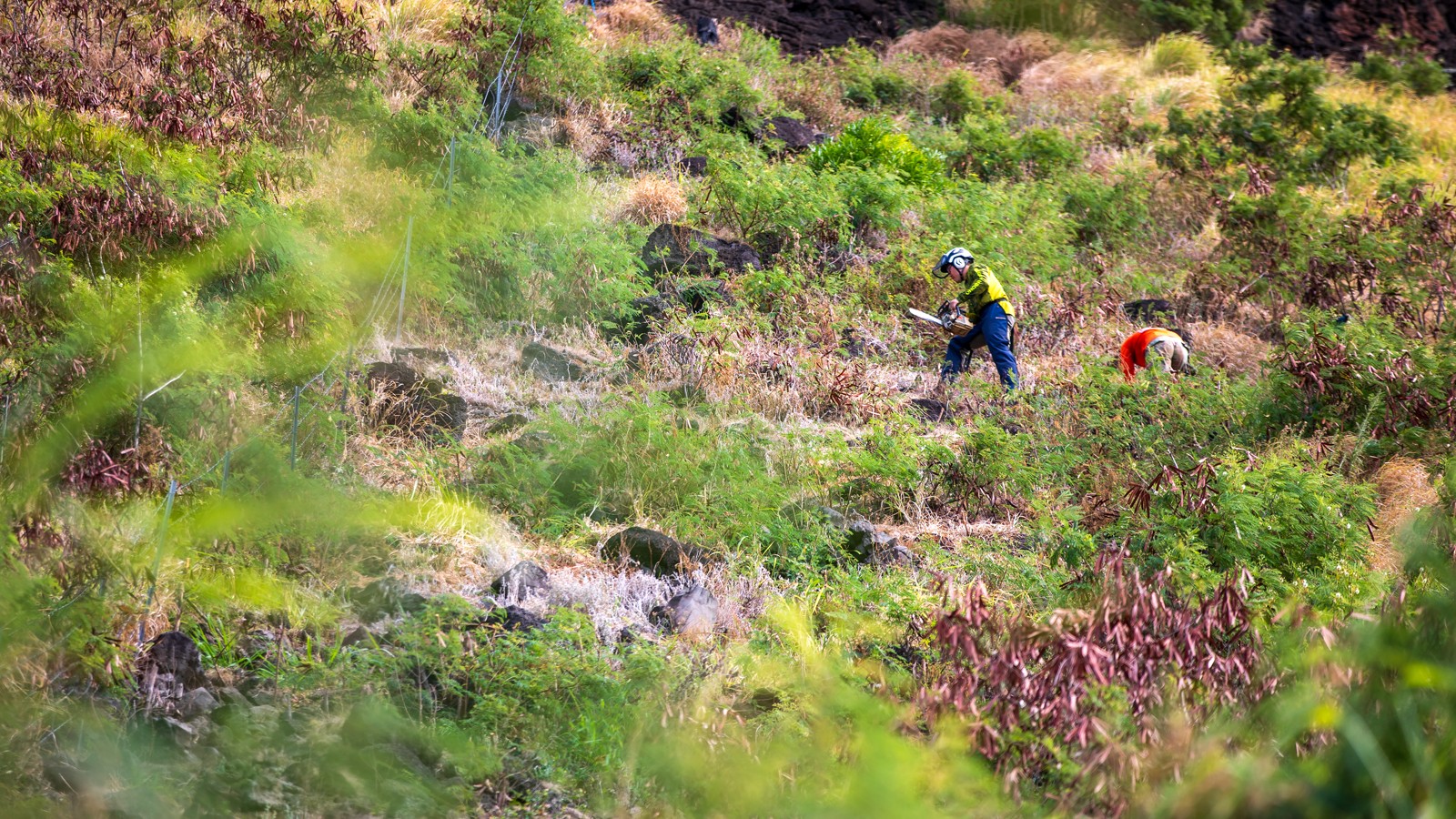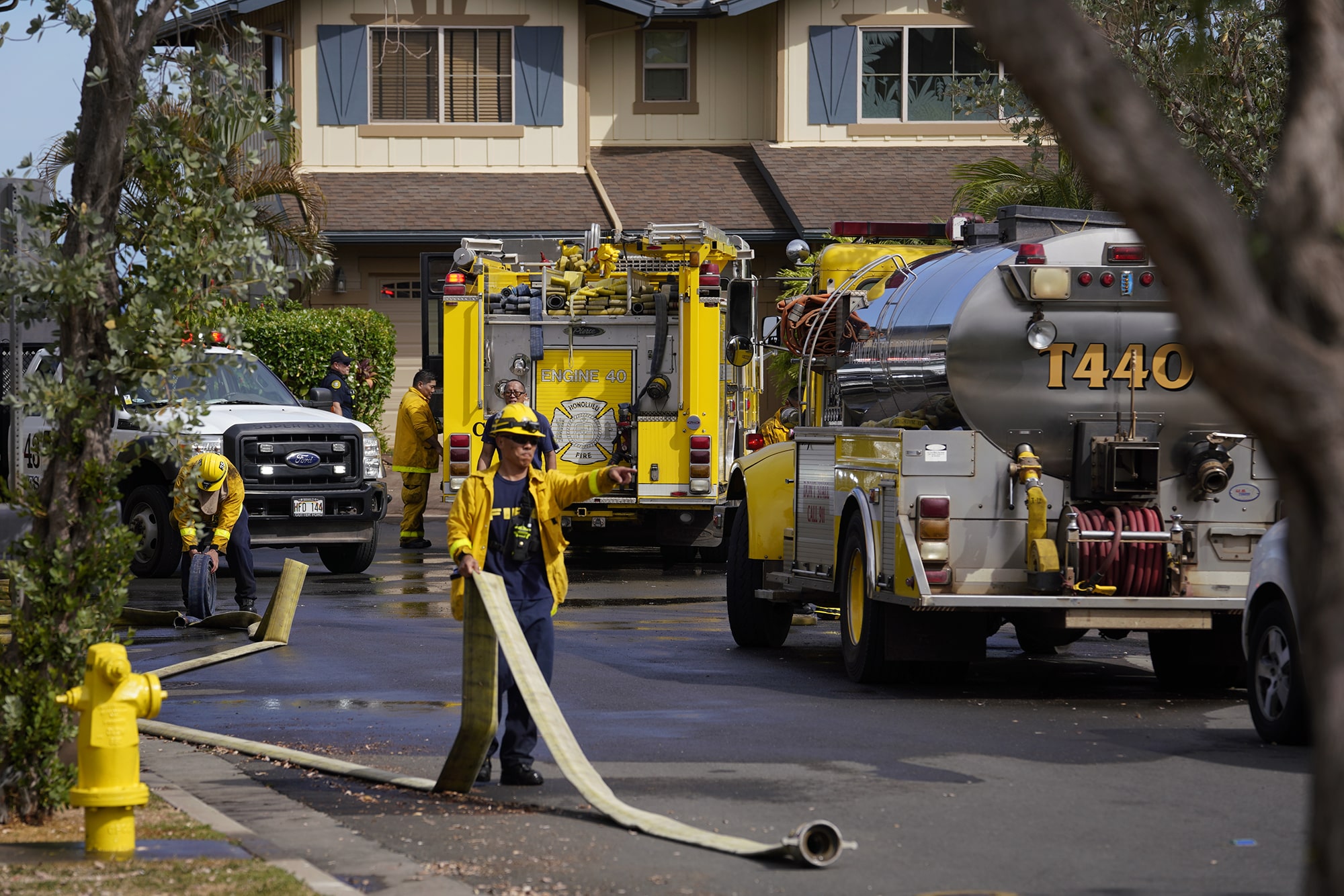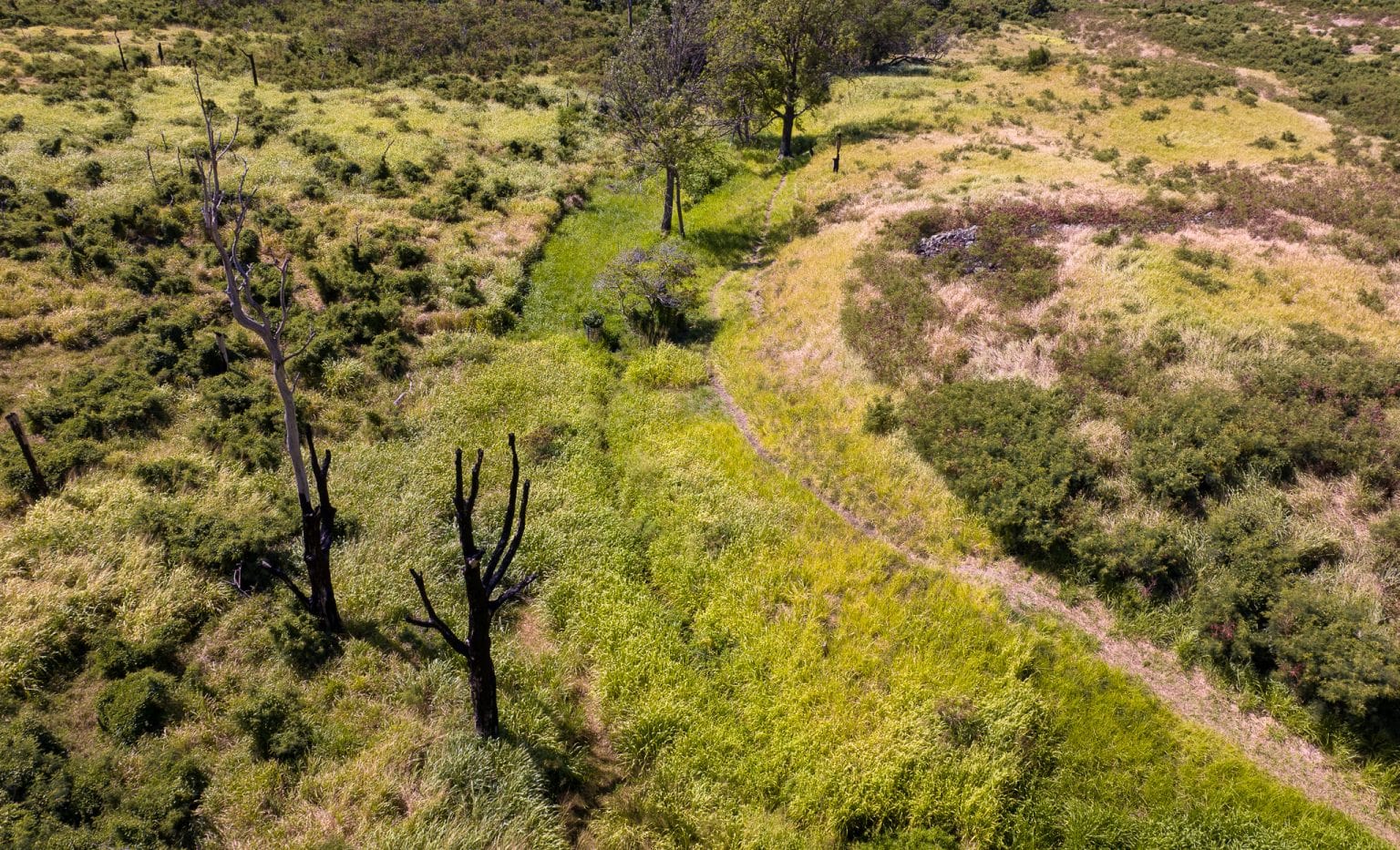This story was initially revealed by Honolulu Civil Beat and is republished with permission.
Hawaii maintains a community of firebreaks to maintain wildfire from spreading, however that system contains tons of of miles of gaps that should be stuffed to guard communities across the state.
Private and non-private land managers coping with the hazard face bureaucratic boundaries and a scarcity of cash and collaboration.
Managing land to cut back hearth hazard took on elevated urgency after the Aug. 8 wildfires on Maui, together with the conflagration that leveled Lahaina and killed at the least 115 folks.
Each firebreaks and fuelbreaks are used to gradual or halt the unfold of wildfire. Firebreaks are usually large belts of naked soil, however roads and rivers can serve the identical objective. Fuelbreaks are actively managed strips of land with minimal vegetation, supposed to weaken the depth and unfold of fireplace.
Hawaii has roughly 4,300 miles of breaks, however wants roughly 350 miles extra — accounting for some 400,000 acres, based on 2019 knowledge collected by the Hawaii Wildfire Administration Group.
It’s uncertain that firebreaks round Lahaina on Aug. 8 would have stemmed the unfold of the West Maui hearth, given the excessive winds, HWMO co-executive director Elizabeth Pickett mentioned. However the tracts play an integral function in serving to firefighters entry hard-to-reach areas to dissipate fires’ depth.
Way back to 2018, hearth officers and land managers recognized a necessity for an extra 350 miles of breaks throughout conferences with representatives of 128 non-public and public teams and HWMO.
However as a result of these breaks cross federal, state, county, and personal lands, there should be collective buy-in and coordination to make it work, in addition to cash to pay for all of it, Pickett mentioned.
“Hearth doesn’t acknowledge fence strains and ownerships and jurisdiction. So we’d like our fuels administration to make sense on the land degree,” Pickett mentioned.
The 2018 conferences resulted in an evaluation of the state’s wants that has knowledgeable a lot of its work on vegetation administration till now.
Constructing breaks
However the effort has not acquired sufficient consideration or cash, officers say.
Constructing a firebreak on public land is dear. The Division of Land and Pure Assets says it could’t afford to do it in need of an emergency.
DLNR, which manages 26 % of the state’s land, maintains simply over 320 miles of breaks statewide however solely cuts them throughout lively wildfires. The division says the regulatory prices of defending environmental, cultural, and historic assets make it unfeasible besides throughout emergencies.

Nathan Eagle/Civil Beat/2023
These rules are waived throughout lively fires, when skilled “dozer scouts” from DLNR’s Division of Forestry and Wildlife information bulldozers to chop ribbons within the panorama to cease hearth with out destroying necessary assets.
The result’s an “advert hoc community” of firebreaks and fuelbreaks, based on DOFAW forester Michael Walker.
To hyperlink all of it collectively throughout boundaries will take time, workers and funding past DOFAW’s present capabilities, Walker says.
A invoice that was killed this 12 months would have put aside $3 million over two years for DOFAW to attach Hawaii’s breaks. Even that might have fallen far brief, Walker says.
“And it’s not simply us — forestry and wildlife — that want gasoline discount funds. It’s ranchers, farmers,” Walker mentioned in a July interview earlier than the Lahaina hearth.
Farmers and ranchers are key gamers in stopping wildfire as a result of they actively handle the panorama, both by grazing or crops. Land now not used for these functions has contributed to the unfold of wildfire in latest a long time.
Unused land has fostered the unfold of invasive grasses, many thriving beneath drought circumstances.
A lot of this land now borders improvement.

Kevin Fujii/Civil Beat/2023
“The majority of the housing in Hawaii lately is constructed on prime of previous plantation land,” Walker mentioned. “So that they’ll develop a chunk of it, however then the remainder of it’s nonetheless surrounded by fallow ag land.”
Every week in the past, a three-acre wildfire threatened three properties in Oahu’s Makakilo, a neighborhood that has persistently raised considerations over its single evacuation route. It got here up once more not too long ago, within the aftermath of the Aug. 8 Maui fires.
On prime of evacuation considerations, the Honolulu Hearth Division mentioned in a press launch that there are too few firebreaks within the unmanaged land bordering the neighborhood.
As a result of wildfire doesn’t respect property strains, it has been a spotlight for HWMO, which has been engaged on bolstering communication, funding, and coordination throughout the state.
That was the objective of HWMO’s 2018 conferences: to check and set up an “all arms, all lands” strategy in Hawaii, based on co-executive director Pickett.
HWMO has examined community-based, cross-boundary hearth mitigation initiatives on 5 of Hawaii’s main islands, allocating $22,000 to every venture. They ranged from grazing sheep in Waianae to constructing a break in Kawaihae on Large Island.
However Pickett acknowledges that her comparatively small group has solely been capable of give attention to the neighborhood degree.

Nathan Eagle/Civil Beat/2023
“We wish to take into consideration what is smart throughout boundaries,” Pickett mentioned.
Not each landowner has been prepared to participate. HWMO has targeted on working with the prepared.
However extra must be carried out, together with improved hearth codes, laws, and enforcement.
“The place’s the hole? Accountability,” Pickett mentioned.
Taming the vegetation
In gentle of the Aug. 8 fires, county and state lawmakers seem resolved to stem the chance of wildfire in Hawaii.
Final month, Honolulu Mayor Rick Blangiardi ordered a overview of Oahu’s hearth danger, together with firefighting property and capability, unaddressed wants and system vulnerabilities.
Final week, the Hawaii Home of Representatives established working teams to give attention to a number of wildfire subjects to tell payments within the subsequent legislative session.
A type of teams shall be targeted on wildfire prevention.
One among its 16 members, Rep. David Tarnas, believes the state ought to coordinate the institution of a sturdy community of breaks and creating incentives for vegetation administration, as a result of all of it prices cash.
The federal government entity mandated to do the work — DOFAW — has been underfunded for years, Tarnas mentioned.
“We are able to’t simply depart it to a nonprofit,” Tarnas mentioned. “You recognize, now we have to step up as a state and absolutely fund our pure assets and hearth safety program.”
Civil Beat’s protection of Maui County is supported partially by a grant from the Nuestro Futuro Basis.
Civil Beat’s protection of local weather change is supported by the Environmental Funders Group of the Hawaii Group Basis, Marisla Fund of the Hawaii Group Basis and the Frost Household Basis.




